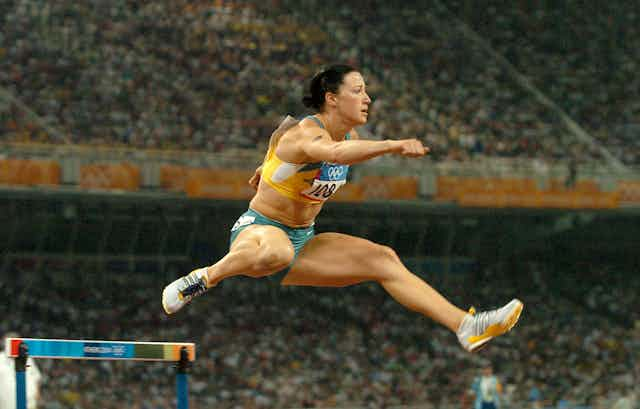Reaching the Olympic Games is undoubtedly the highlight of any athletic career, but this year will be the first time a female Australian athlete has participated in both the Summer and Winter Olympic Games.
That athlete is Jana Pittman who joins her teammate Astrid Radjenovic in the sport of bobsleigh at Sochi this year. So how do the physical talents of a track star translate to a bobsleigh?
In December 2012 Jana Pittman joined the Australian women’s bobsleigh crew, which then took seventh place in a field of 13 sleds in early January 2013 – the best ever result by any Australian crew. The women have produced consistent results in the 2013/14 season, their best result being a 12th place at the 2014 World Cup in St Moritz, Switzerland.
Bobsleigh is one of the highest profile sports at the Winter Olympic Games and is known as the “Formula One race on ice”. It was one of the original Winter Olympic sports, with women’s bobsleigh being added to the Olympic program at Salt Lake City in 2002.

Athletes sprint down the icy track on foot and push their sled at speeds of about 40km/h before jumping in. Once the crew is loaded, the pilot steers the sled through twisting, high-speed turns and straightaways where top speeds can reach more than 130km/h.
Hurdling down the bobsleigh track
Both Jana and Astrid have had long and successful careers as 400m hurdlers, an event that requires extraordinary speed, strength and endurance. As the key to bobsleigh is an explosive start, the experience and physical speed and strength of track athletes provides the ideal match.

As Jana’s role in the bobsleigh is as the anchor, she provides the pure power and speed to get the team off to a good start. Astrid, as the pilot of the bobsleigh must also have speed and power, at a minimum to keep up with the anchor during the start.
As a world-class hurdler however, Jana brings with her an additional skill that a flat track sprinter cannot provide – flexibility to leap.
When competing in bobsleigh, both athletes not only have to run as fast as they can to push the bobsleigh forward onto the track, they also have to leap into the bobsleigh itself.
According to Lisa Hasker, an elite hurdling and sprint coach, the action of the run and leap within the sport of bobsleigh is very similar to the action needed for hurdles.
The athlete, and particularly the anchor, needs to be flexible enough to leap quickly into the bobsleigh after sprinting, maintain a cramped position in a crouch within the bobsleigh and be strong enough to pull the brake at the end to avoid crashing into the wall after the finish line.
Jana’s training would not be significantly different to her training as an elite hurdler, however the most significant would be a greater focus on short bursts of effort and power training. Jana’s Summer Olympic events (400m run and 400m hurdles) are substantially longer and require more endurance than the 10-15m sprint to start the bobsleigh race.

Talent transfer
Jana is one of many female athletes in the Australian Winter Olympic team who have joined their Winter Olympic sport through talent transfer.
Talent transfer, according to the Australian Sports Commission, involves considerable planning and research:
Talent transfer begins with a coach understanding the athlete’s positive and negative characteristics and prospects, followed by deliberate fast-track development programming.
Talent transfer primarily occurs informally, generally through an athlete seeking out opportunities for themselves to try an alternative sport.
In this case, both hurdling and bobsleigh require inherent running speed, power and flexibility; the technical components of the new sport can be learnt.
A significant amount of effort and support was required by the women’s bobsleigh team to qualify for the Sochi 2014 Winter Olympic Games. Olympic qualification requires success in a number of qualifying events.
The women’s bobsleigh team (the Icebirds) relied heavily on the support of sponsors, and during their qualification campaign in 2013, used crowdfunding and social media promotion to raise the funds to support their Olympic qualification events.
With the women’s bobsleigh heats starting on February 18, we will be witnessing an extraordinary woman achieving extraordinary feats of human strength and endurance in her leap from Summer to Winter Olympics.

